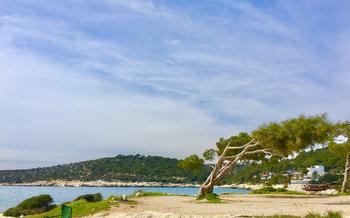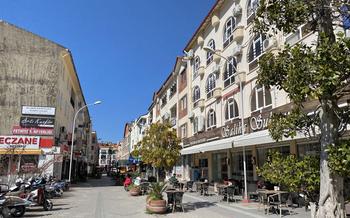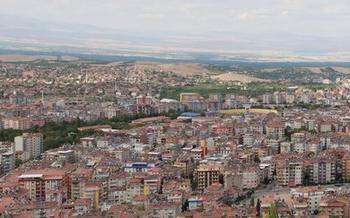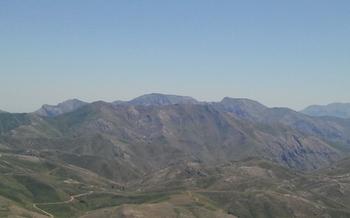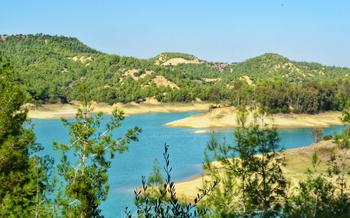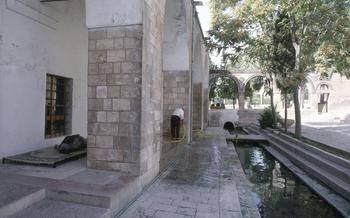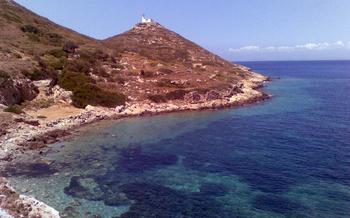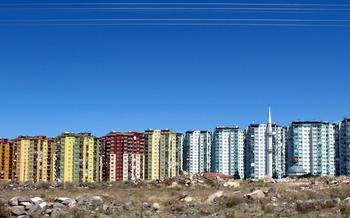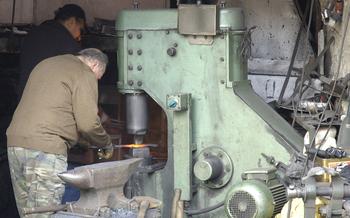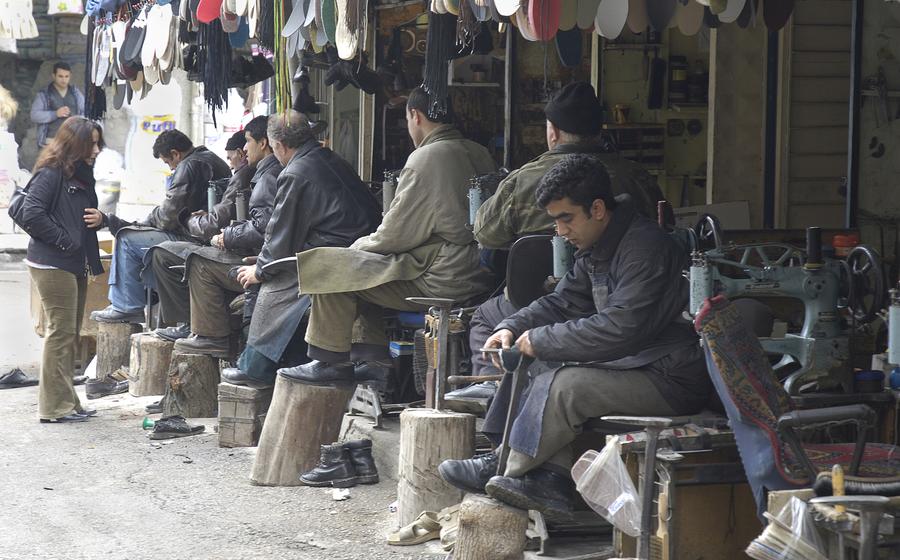
Bintas Cave
- Historical Significance
- Natural Wonders
- Guided Tours
- Self-Exploration
- Accessibility
- Photography and Videography
- Conservation Efforts: Protecting the Bintas Cave's Natural Beauty
- Local Cuisine
- Nearby Attractions: Exploring Beyond the Bintas Cave
- Festivals and Events
- Accommodation
- Transportation
- Souvenirs and Handicrafts
- Cultural Etiquette
- Insider Tip: Discover the Enchanting Hidden Cave
Historical Significance
The Bintas Cave in Malatya, Turkey, holds immense historical significance, serving as a testament to ancient human settlements and prehistoric life. As one of the oldest known caves in the region, it has captured the attention of archaeologists and historians worldwide.
The cave's earliest inhabitants were believed to have occupied it during the Middle Paleolithic era, around 100,000 years ago. Evidence of their presence includes stone tools, animal bones, and hearths found within the cave. These discoveries suggest that the cave was used as a hunting camp or a temporary shelter for nomadic groups.
During the Neolithic period, around 8000 BC, the cave transitioned into a more permanent settlement. Archaeological excavations have revealed the remains of several houses, storage pits, and pottery fragments, indicating that the cave was inhabited by a community of early farmers. These findings provide valuable insights into the lifestyle and agricultural practices of the region's earliest inhabitants.
However, the cave's occupation was not limited to prehistoric times. In the Hellenistic period, around the 3rd century BC, the cave was used as a religious sanctuary. Evidence of this includes inscriptions and carvings dedicated to various deities, suggesting that the cave held spiritual significance for the local population.
The Bintas Cave's abandonment remains a mystery, but it is believed to have occurred sometime in the Late Roman period. The reasons for this abandonment are still debated, with some theories suggesting that it may have been due to changes in climate, political instability, or disease outbreaks.
Today, the Bintas Cave stands as a captivating relic of the past, offering visitors a glimpse into the lives of our ancient ancestors and the rich history of the region.
Natural Wonders
The Bintas Cave is a geological marvel, showcasing a breathtaking array of natural formations that have been sculpted by millions of years of water erosion. As you delve deeper into the cave, you'll be captivated by the towering stalactites that descend from the ceiling like giant icicles, and the majestic stalagmites that rise from the ground like ancient pillars. The interplay of these formations creates a surreal and awe-inspiring landscape that leaves visitors in awe.
The process of stalactite and stalagmite formation is a testament to the patient work of nature. Water seeping through the cave's limestone ceiling dissolves minerals, which are then deposited as the water evaporates. Over time, these deposits build up, slowly forming the intricate and diverse shapes that we see today.
The sheer size and scale of the cave's chambers are equally impressive. The main chamber, known as the "Grand Hall," is a vast and cathedral-like space that can accommodate hundreds of people. Its towering height and echoing acoustics create a sense of grandeur that is both humbling and exhilarating.
The Bintas Cave is also home to a diverse ecosystem that has adapted to the unique conditions of the subterranean environment. Various species of bats, insects, and other small creatures inhabit the cave, playing essential roles in maintaining its delicate ecological balance.
Guided Tours
Exploring the Bintas Cave with a knowledgeable guide offers a wealth of benefits. Guided tours provide a safe and informative experience, allowing visitors to navigate the cave's intricate passages and chambers with ease. Guides possess an in-depth understanding of the cave's history, geology, and ecosystem, sharing captivating stories and insights that bring the cave to life. They can point out hidden details, explain the significance of various formations, and answer questions that arise during the tour.
There are several types of guided tours available, catering to different interests and preferences. Standard tours typically cover the cave's main attractions, providing a comprehensive overview of its wonders. Specialized tours may focus on specific aspects, such as geology, archaeology, or photography. Visitors can choose the tour that best suits their interests and learning style.
Guided tours typically last between one and two hours, depending on the chosen itinerary. Costs vary depending on the tour type and duration, but they generally offer excellent value for the knowledge and experience gained. It's advisable to book tours in advance, especially during peak tourist season, to secure a spot and avoid disappointment.
Self-Exploration
For those seeking a more independent adventure, self-exploration of the Bintas Cave is a thrilling option. However, it requires careful planning and adherence to safety guidelines. Before embarking on your journey, ensure you have the appropriate gear, including a sturdy flashlight, comfortable hiking shoes, and a helmet for added protection. Remember, the cave can be slippery, so non-slip footwear is essential.
Once inside the cave, take your time to explore its various chambers and formations. Be mindful of your surroundings and maintain a safe distance from the cave walls to avoid disturbing the delicate ecosystem. Respect the natural beauty of the cave by refraining from touching or damaging any of its features. Leave no trace of your visit, and dispose of any waste responsibly.
If you're unsure about navigating the cave independently, consider joining a guided tour initially. This will provide you with valuable insights into the cave's history, geology, and safety protocols. Once you're more familiar with the cave's layout, you can venture out on your own to discover its hidden secrets.
Accessibility
The Bintas Cave is committed to ensuring that all visitors, including those with disabilities, have the opportunity to explore its wonders. Wheelchair-accessible paths and ramps have been thoughtfully constructed throughout the cave, allowing individuals with mobility limitations to navigate the site with ease. While most areas of the cave are accessible, it's important to note that some sections may have narrow passages or uneven terrain, requiring assistance or special equipment. To ensure a smooth and enjoyable experience, visitors with disabilities are encouraged to contact the cave's management in advance to discuss any specific requirements or concerns. Accessible parking spaces are also available near the cave's entrance, providing convenience and ease of access for all visitors.
Photography and Videography
The Bintas Cave offers a unique opportunity for photography and videography enthusiasts to capture the stunning beauty of its natural formations. While photography and videography are generally permitted, there are a few guidelines that visitors must follow to ensure the preservation of the cave's delicate environment.
Flash Photography and Tripods
The use of flash photography is generally discouraged within the cave, as the bright light can damage the cave's fragile formations. Tripods are also not allowed, as they can obstruct walkways and disturb other visitors. Instead, visitors are encouraged to use natural light and steady their cameras by leaning against walls or using a monopod.
Respecting the Environment
It is important for photographers and videographers to be mindful of their impact on the cave's environment. Avoid touching or disturbing the cave's formations, and be careful not to leave any trash or debris behind. Additionally, be cautious of disturbing any wildlife that may be present within the cave.
Tips for Stunning Shots
To capture stunning shots of the cave's formations, consider using a wide-angle lens to capture the scale and grandeur of the chambers. Experiment with different shutter speeds to create dynamic effects, such as blurred water droplets or flowing stalactites. Additionally, try using different angles and perspectives to create unique and eye-catching compositions.
Conservation Efforts: Protecting the Bintas Cave's Natural Beauty
The Bintas Cave is a natural treasure that requires ongoing conservation efforts to protect its delicate ecosystem and preserve its beauty for future generations. Sustainable tourism plays a vital role in this endeavor, ensuring that visitors can enjoy the cave's wonders while minimizing their impact on the environment.
Several conservation initiatives are underway to safeguard the cave's unique formations and diverse wildlife. These initiatives include limiting the number of visitors allowed inside the cave, implementing strict guidelines for tour operators, and conducting regular monitoring and research to assess the cave's health.
As a visitor, you can contribute to these conservation efforts by following ethical guidelines and respecting the cave's natural environment. Avoid touching or damaging the formations, and dispose of waste responsibly. By working together, we can ensure that the Bintas Cave remains a pristine and awe-inspiring destination for years to come.
Local Cuisine
Malatya is a culinary paradise, offering a unique blend of flavors and dishes that reflect the region's rich history and culture. When visiting the Bintas Cave, be sure to savor the local cuisine to complete your experience.
One must-try dish is "kayısı dolması," a delectable dish made from dried apricots stuffed with rice, meat, and spices. The apricots' sweetness perfectly complements the savory filling, creating a harmonious taste.
Another local specialty is "Malatya mantısı," a type of ravioli filled with minced meat and cooked in a yogurt sauce. The dumplings are small and delicate, bursting with flavor in every bite.
For a sweet treat, indulge in "kayısı tatlısı," a traditional dessert made from dried apricots simmered in a sweet syrup. The apricots' natural sweetness shines through, making this dessert a perfect way to end your meal.
When in Malatya, be sure to visit the local markets to experience the vibrant atmosphere and pick up some fresh produce, spices, and traditional Turkish delights.
I had the opportunity to try "kayısı dolması" at a local restaurant, and it was an explosion of flavors. The apricots were perfectly cooked, and the filling was savory and aromatic. I highly recommend this dish to anyone visiting Malatya.
Nearby Attractions: Exploring Beyond the Bintas Cave
Malatya offers a wealth of attractions beyond the Bintas Cave that are worth exploring. History buffs can delve into the past at the Malatya Museum, showcasing artifacts from the region's rich cultural heritage. Nature enthusiasts will find solace in the scenic environs of the Battalgazi Dam and Reservoir, where they can indulge in peaceful walks, fishing, or birdwatching. For a taste of local traditions, visitors can explore the vibrant bazaars of Malatya, where they can haggle for unique handicrafts, textiles, and local delicacies.
Don't miss the opportunity to embark on a culinary adventure in Malatya. Savor the flavors of traditional dishes such as "kayısı dolması" (stuffed apricots), "Malatya mantısı" (dumplings), and "cevizli sucuk" (walnut sausage), a unique sweet treat. Indulge in the local cuisine at cozy restaurants or delve into the bustling street food scene, where you'll find an array of mouthwatering options.
For those seeking spiritual enlightenment, the historic Arslantepe Mound, located just 12 kilometers from the city center, offers a glimpse into ancient civilizations. Unearth the secrets of this archaeological treasure, home to the remnants of an impressive Hittite settlement.
Enhance your Malatya experience by venturing further afield. Take a scenic drive to the nearby city of Elazığ, renowned for its majestic Harput Castle and the Hazar Lake National Park, a haven for nature lovers. Immerse yourself in the breathtaking landscapes, rich history, and warm hospitality that Malatya and its surroundings have to offer.
Festivals and Events
Malatya comes alive with vibrant festivals and events throughout the year, offering visitors a chance to immerse themselves in the region's rich cultural heritage. The Malatya Apricot Festival, held annually in June, celebrates the city's renowned apricots, showcasing a variety of apricot-based products, traditional dances, and live music performances. The Malatya International Film Festival, held in September, screens a diverse selection of local and international films, attracting filmmakers and movie enthusiasts from around the world. For a taste of local traditions, the Malatya Folk Dance Festival, held in July, features colorful performances by folk dance troupes, showcasing the region's vibrant dance forms and costumes. Plan your trip around these special occasions to experience the infectious energy and cultural tapestry of Malatya.
Accommodation
When planning your visit to the Bintas Cave, choosing the right accommodation is crucial for a comfortable and memorable stay. Malatya offers a range of accommodation options to suit different budgets and preferences.
For a luxurious and convenient experience, consider staying at one of the upscale hotels located near the cave. These hotels offer modern amenities, comfortable rooms, and often stunning views of the surrounding landscape.
If you prefer a more budget-friendly option, there are several guesthouses and hostels within easy reach of the cave. These accommodations provide basic but clean and comfortable rooms at a fraction of the cost of hotels.
For those seeking a unique and authentic experience, Airbnb offers a variety of rental options in the area. From cozy apartments to charming village houses, Airbnb rentals allow visitors to immerse themselves in the local culture and enjoy a home away from home.
When selecting accommodation, consider factors such as proximity to the cave, amenities, and budget. Additionally, it's advisable to book your stay in advance, especially during peak tourist season, to avoid disappointment.
I had the pleasure of staying at a charming guesthouse near the cave during my visit. The guesthouse was run by a friendly family who went above and beyond to ensure my comfort. The rooms were spotless, and the traditional Turkish breakfast was a delightful way to start each day.
Transportation
Reaching the Bintas Cave from major cities in Turkey is relatively easy and convenient. Several transportation options are available, catering to different preferences and budgets. Buses are a popular and affordable choice, offering regular service from major cities like Ankara, Istanbul, and Izmir. The journey by bus typically takes between 8 and 12 hours, depending on the distance and traffic conditions.
For those seeking a more comfortable and flexible option, rental cars are readily available in major cities. The drive to the cave offers a scenic adventure through the Turkish countryside, with opportunities to explore charming towns and villages along the way. The estimated driving time from Ankara is approximately 6 hours, while from Istanbul and Izmir, it can take up to 10 hours.
If time is of the essence, domestic flights are an excellent option. Several airlines offer direct flights from major cities to Malatya Airport, which is located about an hour's drive from the cave. From the airport, visitors can easily rent a car or take a taxi to reach their destination.
When planning your transportation, consider factors such as travel time, budget, and personal preferences. Whether you choose to embrace the local experience by bus, enjoy the freedom of a road trip, or opt for the convenience of air travel, getting to the Bintas Cave is a straightforward and enjoyable experience.
Souvenirs and Handicrafts
When visiting Malatya, embrace the opportunity to take home a piece of its rich cultural heritage through unique souvenirs and handicrafts. Explore the vibrant local markets or visit specialized shops to discover an array of handmade treasures.
-
Traditional Textiles: Malatya is renowned for its exquisite textiles, including intricate carpets, kilims, and woven fabrics. These vibrant creations showcase traditional patterns and motifs, each telling a story of the region's heritage.
-
Copper Handicrafts: Discover the art of copper craftsmanship in Malatya, where skilled artisans transform this versatile metal into stunning decorative pieces. From ornate trays and vases to intricate jewelry, these copper creations are a testament to local artistry.
-
Pottery and Ceramics: Unearth the beauty of Malatya's pottery and ceramics, handcrafted with care using local clay. Adorned with vibrant glazes and unique designs, these pieces are both functional and decorative, adding a touch of charm to any home.
-
Local Delicacies: Take a taste of Malatya home with you by purchasing local delicacies such as kayısı (dried apricots), pestil (fruit leather), and cevizli sucuk (walnut sausage). These culinary delights are not only delicious but also make for thoughtful and tasty souvenirs.
-
Hand-Embroidered Items: Discover the intricate art of hand embroidery in Malatya, where skilled artisans create vibrant and colorful textiles. From cushion covers and tablecloths to clothing and accessories, these embroidered pieces are a true testament to local craftsmanship.
Remember, when shopping for souvenirs in Malatya, support local artisans by purchasing directly from them or from reputable shops that promote fair trade practices. Your purchases not only contribute to the preservation of traditional crafts but also support the livelihoods of talented individuals who keep these traditions alive.
Cultural Etiquette
When visiting Malatya and exploring the Bintas Cave, it's essential to be mindful of the local culture and customs. Dressing modestly is recommended, especially when visiting religious sites or conservative areas. While interacting with locals, a friendly smile and a warm greeting go a long way. Respecting personal space and avoiding overly personal questions is considered polite. It's important to remember that Malatya is a predominantly Muslim city, so respecting religious practices and traditions is essential. Learning a few basic Turkish phrases, such as "Merhaba" (hello) and "Teşekkür ederim" (thank you), can show your appreciation for the local culture and help you connect with the people. By being respectful and open-minded, you'll create a positive and enriching experience for yourself and the locals you encounter.
Insider Tip: Discover the Enchanting Hidden Cave
Beyond the well-trodden paths of the Bintas Cave, a hidden gem awaits those willing to venture off the beaten track. Nestled in the heart of the surrounding hills, the "Enchanted Hidden Cave" unveils a world of wonder and secrecy. Accessible through a narrow and winding passage, the cave unfolds into a mesmerizing chamber adorned with sparkling crystals and delicate stalactites. The play of light creates an ethereal atmosphere, casting a magical glow on the cave's formations. As you explore its depths, you'll feel as though you've stepped into a forgotten realm, untouched by time and waiting to be discovered. Whether you choose to admire its beauty in silence or let your imagination soar as you explore its hidden corners, the Enchanted Hidden Cave promises an unforgettable experience for those who seek adventure beyond the ordinary.
